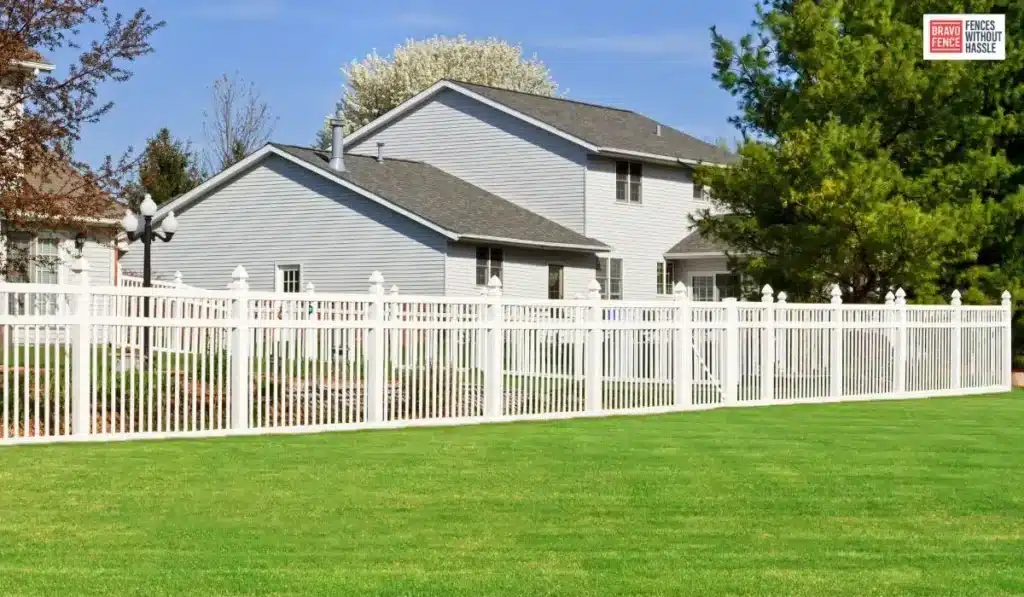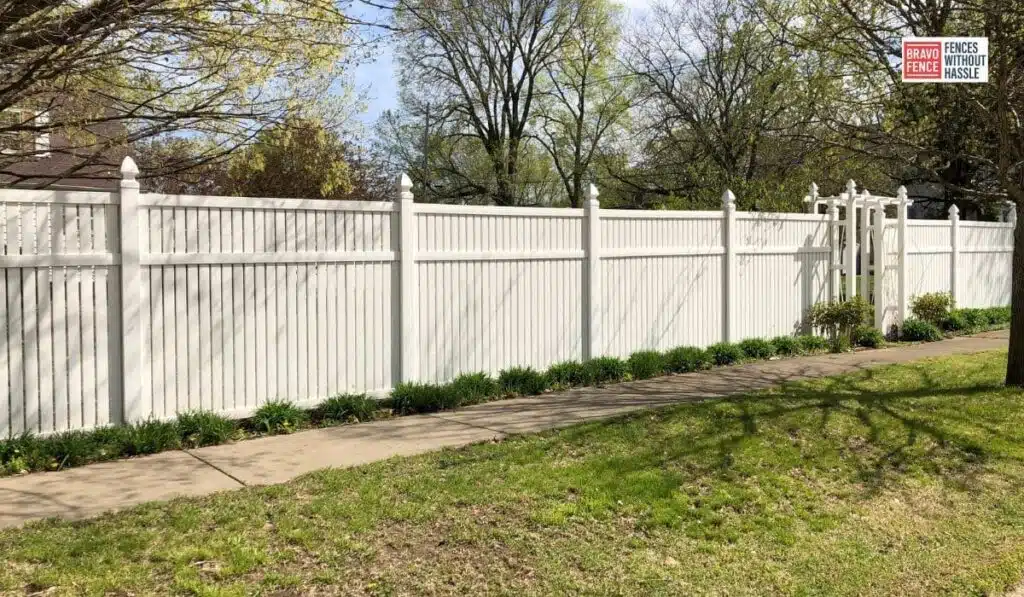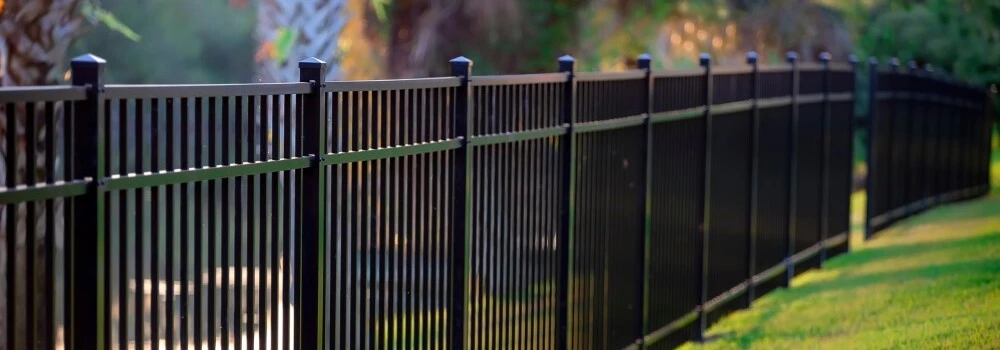
What are The Signs That Vinyl Fencing Needs Maintenance?
Many homeowners love using vinyl fencing because it is solid and low maintenance, carrying an attractive appearance.
Even though vinyl fences are remarkably resilient, some care must be accorded to them to maintain them in their best condition.
Over time, these fences may suffer some problems from exposure to the elements, accidental damage, and general wear and tear.
Regular maintenance is the best avenue to prolong the life of your vinyl fence and maintain its glow.
This article will outline signs showing that your vinyl fence needs some maintenance or repairs, give some tips about cleaning, and help you ensure it looks great.
Introduction
Vinyl fences are durable but not maintenance-free.
Regular care prevents minor issues from turning into big problems.
For example, though vinyl resists rot, insects, and warping cracks, discolouration or sagging can develop after some time.
Knowing when your fence needs some attention can save you the cost of significant repairs or even a complete replacement in the long term.
In this article, we’ll walk you through common signs that mean your vinyl fence needs cleaning, along with practical tips on cleaning and caring for your fence.
Whether it is minor cleaning or more severe repairs, proper maintenance of vinyl fences means that your property is secure, beautiful, and functional.
Signs Your Vinyl Fence Needs Maintenance
Cracks or Holes in the Fence
One of the first noticeable signs that your vinyl fence is due for some attention would be when cracks or holes appear on the surface.
Vinyl may be solid, but it becomes brittle with time and the extreme weather conditions it is exposed to.
Such cracks may result from a physical impact, such as lawn equipment or debris from a storm.
While small cracks don’t look like much, they may get bigger if not treated, thus compromising the structural integrity of your fence.
Fix:
- Minor cracks: If it’s minor, a vinyl repair kit or adhesive might be enough to mend the integrity of your fence.
- For larger cracks or holes, you’ll need to replace one or more panels.
- Regularly inspect your fence and attend to minor issues before they become more problematic.
Fading or Discoloration
Vinyl fences are made to prevent the fade-in process, but the ultraviolet rays from the sun can continue to bleed and change the colour and fade over time.
A faded or discoloured fence may take away much of your property’s beauty but may also indicate that the vinyl is breaking down due to solar exposure.
Solution:
- Mild soap and water cleaning can retain much of the original colour on the fence, although, in extreme cases of fading, you may need to replace panels where such fading has occurred.
- You could also apply UV protection for vinyl fences to prevent further fading.
Wrinkling or Sagging
Vinyl fences normally warp or sag due to changes in temperature or heavy physical stress.
Warping or bending is experienced because of temperature variation as it expands and contracts with each temperature change.
Sagging often results from damage to the posts or rails supporting the wall.
Solution:
- Bow: There is likely to be a need for replacement panels as the warped vinyl bows out of shape and cannot be restored.
- Sag: That might be in the fence support system, for example, rotten posts or loose rails. One can make adjustments by tightening or even replacing the post.
Lean Fence

If your vinyl fence is leaning, you may already have some sign that the structural integrity of your fence has been compromised.
A vinyl fence may lean due to ground instability, improper installation of the posts, or stiff winds.
On the other hand, a weakly rotten fence post of your own might cause the leaning.
You can stabilize the tilting by supporting or replacing the poles.
In other places, you must stabilize the soil beside the poles; in others, you must put new footings to provide support.
Damaged or Missing Parts
Such things as broken pieces of the fence post and parts, missing rails or panels, and partly or wholly damaged panels would be involved.
Most of these problems arise from impacts, weathering, or vandalism.
In general, most vinyl fences are produced in a manner where individual components can easily be replaced without having to change the entire wall.
Check out the damage and promptly replace or mend the broken and missing parts to secure your fence’s structure.
When replacing, always use an equal one when it comes to the colour and style of your fence for uniformity.
Moa Signs Vinyl Fence Needs Maintenance
Vinyl fences are generally tough and require less maintenance, so most homeowners would consider installing them.
However, like any other exterior house tool or asset, vinyl fences must also be serviced to ensure they remain in their best working conditions.
In addition to the common signs above, such as cracks, fading, warping, and broken parts, there are other signs that your vinyl fence is already calling for maintenance or repair.
Catching these signs early can allow you to address and extend its lifecycle.
Stubborn Stains and Mildew Buildup
Vinyl fencing is highly resistant to staining, but nothing is entirely immune.
Sometime after installation, you will find some tough stains caused by dirt, pollen, bird droppings, or your neighbour’s landscaping.
Those areas of your fence where moisture permanently happens, for example, under sprinkler systems or shaded trees, may develop mildew or algae buildup.
Those types of stains could be permanent if left untreated.
These things are ruining the looks of your vinyl fencing.
Routine cleaning will keep these stains out.
A mild detergent and water will do for general cleaning, while tougher stains require a bleach-based cleaner or a commercial vinyl fence cleaning product.
The fence should also be dried well after cleaning, as mildew reappears quickly.
If the stains are still there and do not fade off, there could be damage to the material at a deeper level.
This might call for you to replace part of the section.
Loosely or Damaged Fasteners
Another prevalent issue that can develop with vinyl fencing is loose fasteners.
Fasteners are those screws or brackets that attach to the panels of the fence.
Shifting soil, strong winds, and general wear and tear can all work to loosen the fasteners over time.
If left unchecked, loose fasteners make fence sections wobble or fall entirely over.
Inspect for loose or damaged fasteners regularly and tighten or replace them as necessary.
Where you find the fault has occurred at the post itself, re-anchor the posts in concrete or by additional support brackets.
Good condition of fasteners will prevent more serious trouble – indeed, even entire sections of fences collapse in extreme cases.
Shifting or Sinking Fence Posts
Vinyl fence posts are usually sunk into the ground using gravel or concrete to support them.
With time, though, these may shift or sink due to soil wash away, the freezing and thawing of soil or poor installation.
You should take corrective action if you find out that your fence posts have begun leaning or falling into the ground.
In addition, when the fence posts shift or sink, you have to dig up the posts and re-anchor them with fresh concrete.
If the soil surrounding the posts deteriorates due to erosion, gravel may be added, or the soil compacted for added strength.
When left unchecked, this will negatively affect your fence structure in the long term.
Wear and Tear on Account of Harsh Weather Conditions
Vinyl fences are made to withstand various severe weather conditions, including extreme heat, cold, and even rain.
However, over time, extreme weather will eventually have an impact on a vinyl fence.
For instance, freezing temperatures can make a chain-link fence or panel brittle, causing it to crack and break.
Wind can also push loose sections of the vinyl fence out of position and snap the fasteners holding them together.
One crucial thing one would look into to mitigate weather-related damage would be to apply some coat of protection or sealant on the fence.
Seeing that a good deal of regions experience extreme weather, this would be adequate to guard your fence from the negative impact of UV rays, moisture, or temperature changes.
It is also advisable to check at points after extreme weather events to ascertain if there’s some other problem waiting to be jumped at immediately.
Damage from Landscaping and Yard Equipment
Although vinyl fences are pretty durable, they can still damage them with careless usage of yard equipment, especially lawnmowers, weed trimmers or hedge clippers.
Repeated impact from a simple thing like a soccer ball can lead to small cracks or dents over time.
Furthermore, overgrown plants and shrubs may exert pressure on the panels of the fence, making it warp or sag.
Keep plants and shrubs away from the fence to prevent such damage, and be vigilant when using yard equipment near the fence line.
Make the most of finding small cracks or dents to fill them using a repair kit before the damage worsens.
How Frequently Should You Clean Vinyl Fences?
Clean your vinyl fence at least once or twice per year.
Spring and autumn are ideal seasons to clean vinyl fences because of the mild weather.
But if you have a vinyl fence alongside a dusty road or under trees whose sap oozes down sometimes, then clean it often to make it appear new.
Conclusion
Keeping your vinyl fence must be one of your top priorities if it is to endure and look pleasing for an extended period.
Though they are already renowned for possessing strength and durability and requiring minimal effort for maintenance, there is still an aspect concerning their problems to prevent them from worsening due to wear and tear.
Cracks, fading, warping, or leaning over time will avoid more expensive repairs or replacements.
Regular inspections and proper cleaning routines help maintain not only the structural integrity of the fence but also keep it looking pristine, ensuring that your house will look most presentable.
Seasonal maintenance by spring cleaning and applying UV protection may protect your fence from environmental issues such as scorching sunlight and heavy winds, which contribute to dirt buildup.
After all, little efforts nowadays will be enough to keep you free from giant problems later.
In fixing small cracks, changing broken parts, or cleaning away grime, a well-kept vinyl fence will bring value to your property and give you a lifetime feeling of security.
Proper care and attention will make your vinyl fence a servitor for years, bringing beauty and functionality to the outside space.
Frequently Asked Questions (FAQ)
How do I maintain my vinyl fence?
Clean your vinyl fence at least once or twice a year, depending on the climate of your location and how dirty or grimy the fence has gotten.
Spring is an excellent time to clean your vinyl fence after a cold winter.
This will help keep your fence looking good and prevent stains from setting permanently.
How should a vinyl fence be cleaned?
The best method is water, a mild dish soap and a soft cloth or sponge.
For tougher stains like mould or algae, you can use a diluted bleach solution of 1 part bleach to 5 parts water.
Scrub gently, then rinse off the dirt with a garden hose.
Pressure washers are okay, but beware that they might ruin the fence.
Can I paint or stain my vinyl fence to restore its colour?
Vinyl fences are designed with the factor that they will never fade out in colour and don’t need to be painted or stained.
The best course of action should you find your fence faded from UV exposure is to clean it and apply a UV protector.
Generally, a vinyl fence is not a good candidate for painting as it tends to flake off after some time and does not adhere well to a vinyl fence.
When the vinyl fence begins to warp or sag?
Most warping is temperature- and moisture-induced damage.
In that case, reinforcement can easily be made in affected areas by adding more support.
Sagging is usually caused by failing posts or rails; you should replace the damaged sections.
It is always best to address such issues early before damage gets worse.
Preventing Mold and Mildew
Mould and mildew typically tend to grow in moist, shaded environments.
Clean your fence regularly, mainly if your fence receives little sunshine.
You can sprinkle small quantities of mild bleach solution onto your fence to kill mould spores.
Trimming plants or assuring proper air circulation will also minimize the moisture content on your fence.
What are the general signs that my vinyl fence requires replacement?
Common signs include significant cracks, severe discolouration unable to be cleaned, warp, sag, or lean, which cannot be rehabilitated, and several broken or missing sections.
A complete fence replacement is likely better when repairs are often expensive.
Tags: Complete Guide to Home Improvement, Everything You Need to Know About Fence Maintenance, Everything You Need to Know About Fence Repair, Inspiration and Tips on Vinyl Fence Issues, Inspiration and Tips on Vinyl Fencing, Top Ideas and Insights About Fencing Solutions

